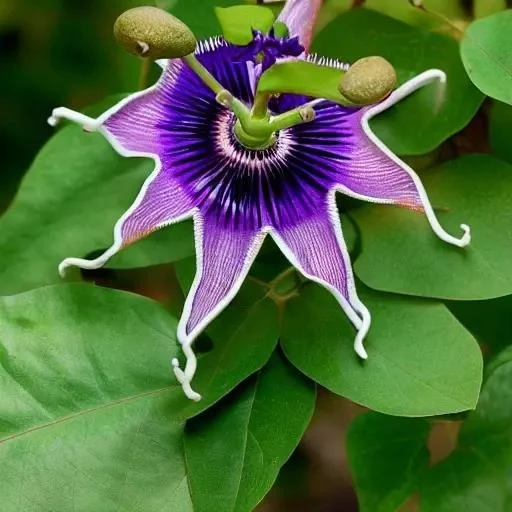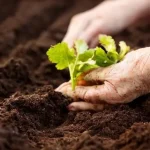Today is 10/04/2025 06:48:49 ()
In the verdant tapestry of a thriving garden, few plants captivate the eye quite like the Passion Flower. Its intricate, almost otherworldly blossoms, often sporting vibrant hues and mesmerizing structures, have long been celebrated for their sheer ornamental beauty. Yet, beyond this striking visual allure lies a botanical marvel brimming with untapped potential, a true powerhouse waiting to be discovered and utilized right from your backyard. This isn’t merely a decorative vine; it’s a versatile treasure chest offering a bounty of culinary delights and profound wellness benefits, promising to transform your gardening experience into an enriching journey of discovery.
For centuries, indigenous cultures across the Americas revered the Passiflora, not just for its breathtaking flowers but for its remarkable medicinal properties, a legacy now embraced by modern herbalists and wellness enthusiasts alike. Today, as we increasingly seek natural solutions and sustainable living, the humble Passion Flower emerges as an incredibly effective, accessible, and truly rewarding plant to integrate into our daily lives. By mindfully harvesting its delicate blossoms, lush leaves, and succulent fruits, you can unlock a spectrum of applications, from enhancing gourmet dishes to crafting soothing remedies, all contributing to a more vibrant and harmonious existence. It’s an invitation to engage with nature’s pharmacy, right at your fingertips.
| Botanical Profile & Key Uses | Details |
| Scientific Name | Passiflora (e.g., Passiflora incarnata) |
| Common Names | Passion Flower, Maypop, Purple Passionflower, Wild Apricot, Wild Passion Vine |
| Key Characteristics | Intricate, vibrant, short-lived flowers; produces edible fruit; fast-growing perennial vine; host plant for Gulf Fritillary butterflies. |
| Primary Applications | Ornamental gardening, Culinary (garnish, beverages, fruit), Medicinal (anxiety reduction, sleep support, relaxation, heart health, menopausal symptom relief). |
| Optimal Harvesting Times | Flowers: Spring through summer (daily, as they bloom for only one day). Leaves/Stems: When both flowers and small fruits are present. Fruits: July to October (approx. 70-80 days after flowering). |
| Native Regions | Southeastern United States, Central and South America. |
| Official Reference | Garden.org ౼ Purple Passionflower |
Harvesting Your Garden’s Botanical Gems: Flowers, Leaves, and Fruit
Embarking on the journey of harvesting your Passion Flower requires a touch of understanding and timing, ensuring you maximize its incredible offerings. The flamboyant blossoms, while undeniably stunning, grace us for only a single day, a fleeting beauty demanding prompt attention if you wish to preserve their delicate essence. To gather these ephemeral treasures, simply use a pair of sharp pruning shears or scissors to carefully snip them from the vine, ideally in the morning after the dew has dried but before the midday sun can diminish their vitality. Simultaneously, the plant’s leaves and stems, often overlooked, hold significant value; herbalists frequently recommend harvesting these vibrant green components when the vine proudly displays both its enchanting flowers and the nascent hints of developing fruits, signaling a peak in its botanical potency. Drying these parts promptly, perhaps by gently rolling the vines into a loose wreath for ample airflow, will secure their properties for future use, preventing spoilage and extending their beneficial lifespan.
Beyond the ephemeral glory of its flowers, the Passion Flower vine generously bestows another remarkable gift: its fruit. Depending on the species, these can range from the familiar purple passion fruit to the lesser-known maypops (from Passiflora incarnata), or even bright orange, plum-shaped varieties. While the green fruits might be edible but not always palatable, the fully ripened versions, often appearing 70 to 80 days after flowering, particularly from July to October, burst with a tangy sweetness perfect for a myriad of culinary adventures. Imagine infusing your morning yogurt with the exotic zest of freshly harvested passion fruit pulp, or elevating a simple glass of iced tea with a vibrant flower garnish. These versatile fruits are incredibly effective in creating delectable desserts, refreshing beverages, and even savory sauces, transforming everyday meals into extraordinary gastronomic experiences with a distinct tropical flair. The possibilities are as limitless as your culinary imagination.
Unlocking Wellness: The Passion Flower’s Medicinal Marvels
Yet, the true depth of the Passion Flower’s allure extends far beyond its aesthetic and culinary charms, delving into a profound realm of wellness and natural healing. Historically cherished by Native American tribes like the Houma and Cherokee, who skillfully employed its various parts for medicinal purposes, this plant has earned its modern moniker as the “dream plant” for incredibly compelling reasons. Contemporary research and traditional herbal wisdom consistently highlight its remarkable ability to promote relaxation, significantly ease anxiety, and dramatically improve sleep quality, making it a natural ally in our often-stressful world. By integrating insights from ancient practices with modern understanding, we can harness its calming compounds to support heart health, alleviate menopausal symptoms, or simply unwind after a demanding day. Crafting a simple tea from its dried leaves and flowers, steeped for 10-15 minutes, perhaps with a touch of honey, offers a wonderfully accessible pathway to these profound benefits, embodying a holistic approach to well-being.
Cultivating a Calmer Tomorrow with Your Passion Flower
As we navigate an increasingly complex world, the unassuming Passion Flower from your garden stands as a radiant symbol of nature’s enduring generosity and power. It’s more than just a beautiful vine; it’s a testament to the profound interconnectedness between our environment and our well-being, offering tangible solutions for both body and spirit. Embracing the cultivation and utilization of this botanical gem promises not only a visually stunning landscape but also a direct pathway to enhanced health, culinary creativity, and a deeper appreciation for the wonders that unfurl just outside our doors. So, step into your garden, connect with this vibrant plant, and begin to unlock the extraordinary potential of your very own Passion Flower – a journey towards a more relaxed, nourished, and ultimately, a more fulfilling life awaits.






